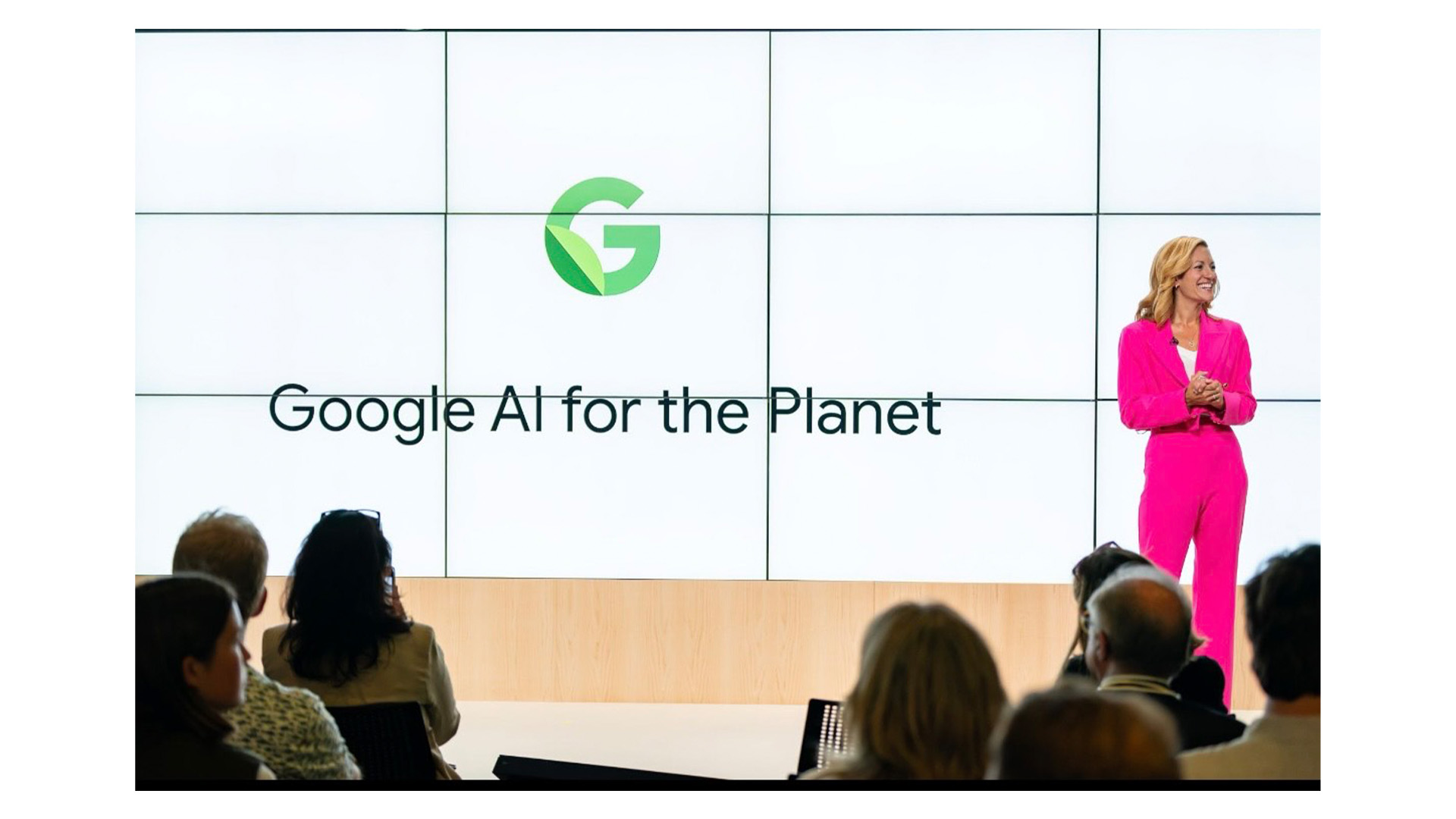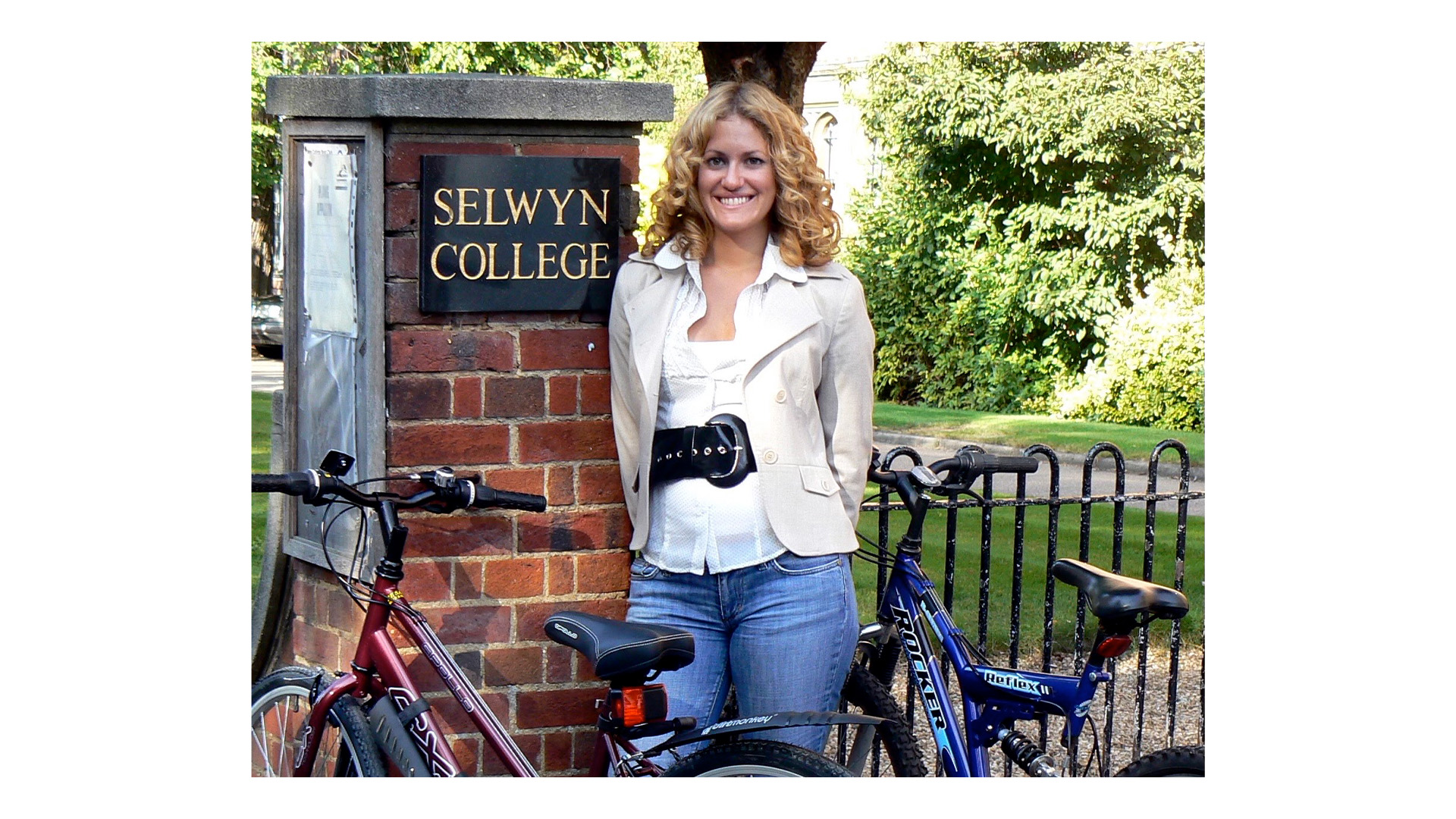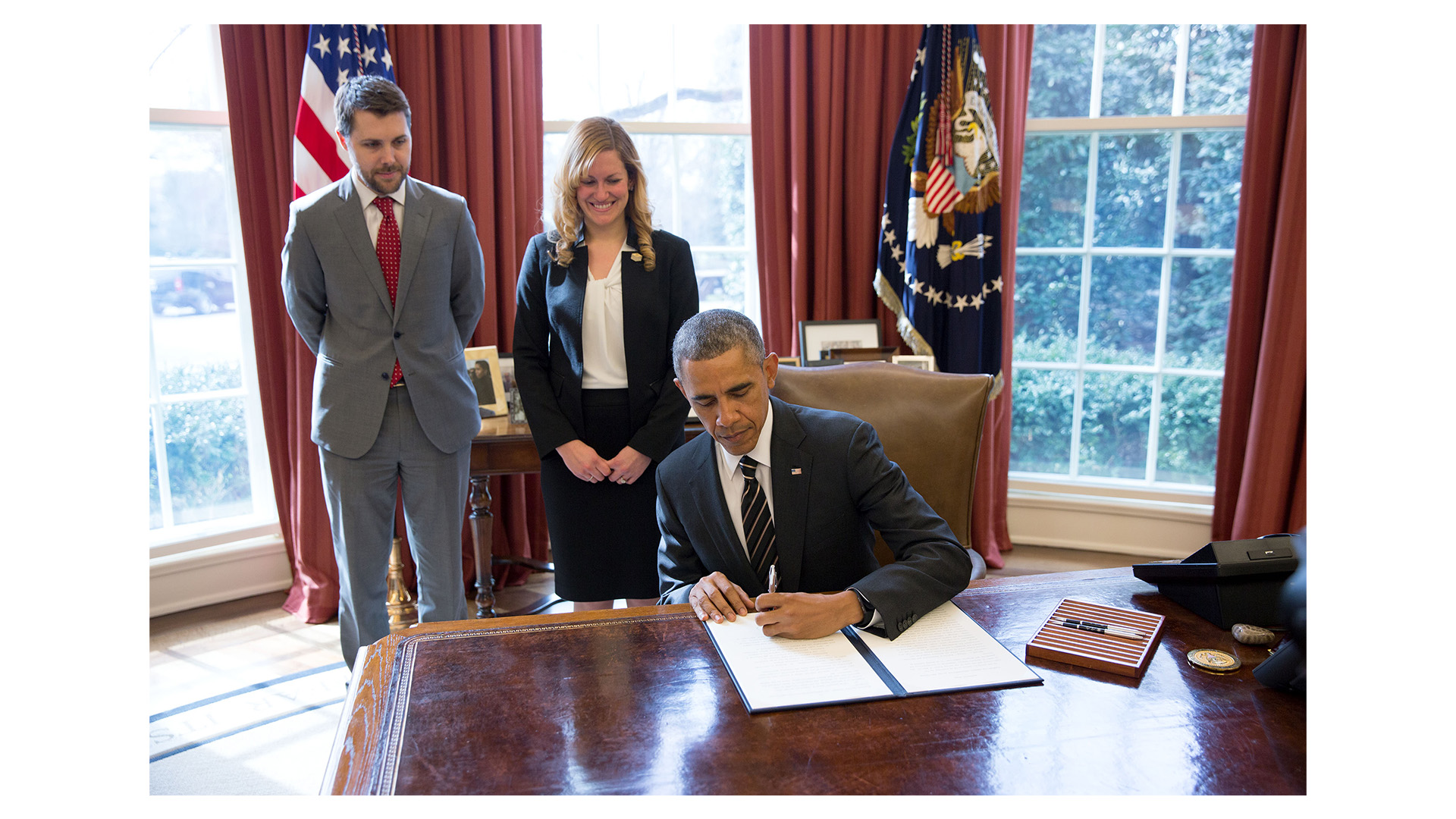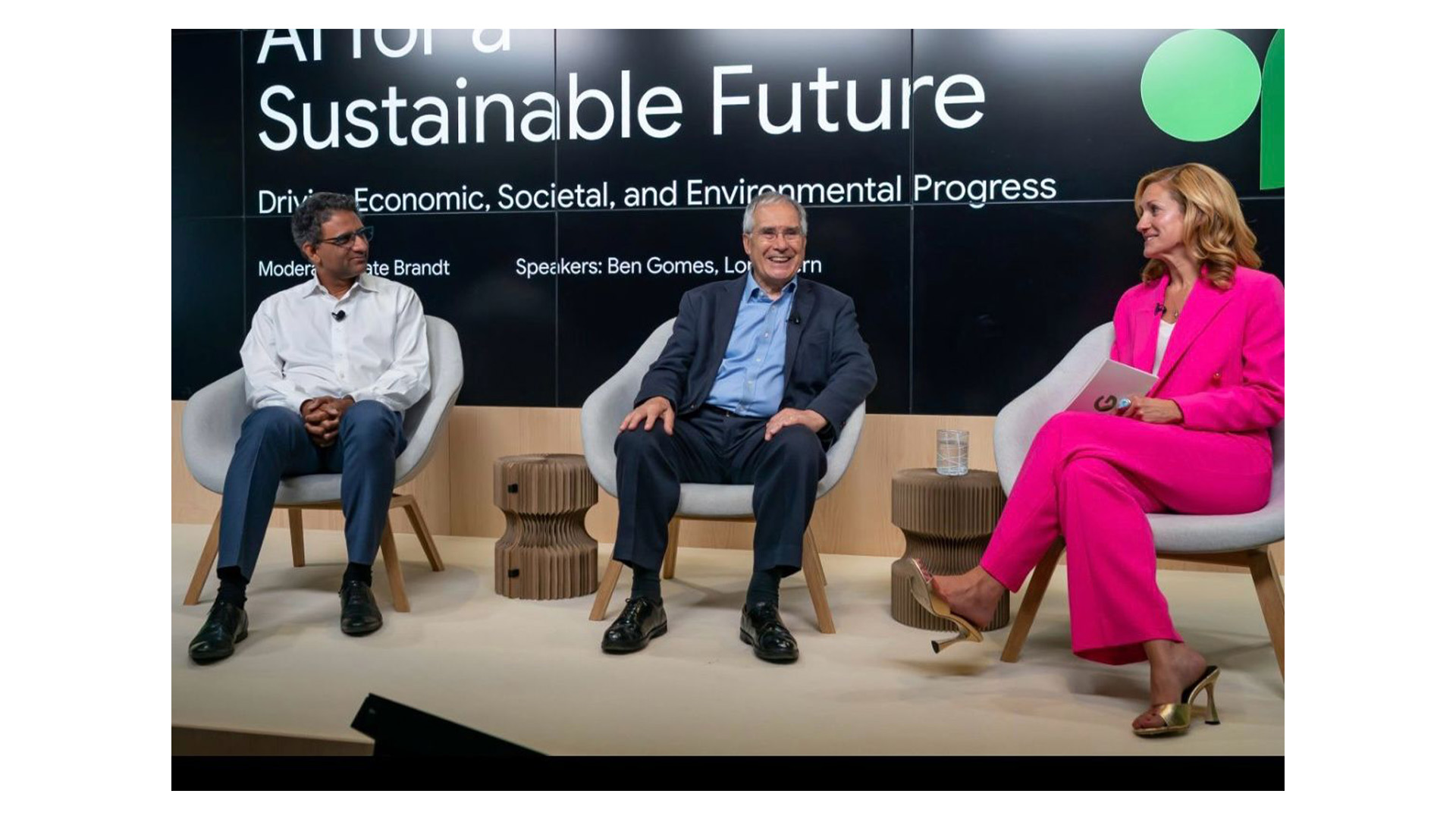Building career in sustainability, from the government to Google, with Kate Brandt (SE 2007)
This article is part of a short series of interviews profiling the fascinating work and achievements of Gates Cambridge Scholars at Selwyn College, in recognition of the 25th anniversary of the Gates Cambridge Scholarship at Cambridge. Learn more about the Gates Cambridge 25th anniversary celebrations here.

The mission of the Gates Cambridge Scholarship is "to build a global network of future leaders committed to improving the lives of others". Almost immediately after graduating from Selwyn, Selwyn alumna and Gates Scholar Kate Brandt (SE 2007) joined the newly formed Obama administration in the US, rising through the ranks of several government agencies before becoming the first-ever Federal Chief Sustainability Officer for the US Government in 2014. Today, she leads global sustainability efforts at Google.
We spoke with Kate about her time at Cambridge, career highlights so far and advice for those looking to enter the field of sustainability.
Kate, you're a California native. Can you tell us more about your early life?
I’ve always felt a deep connection to nature. I grew up in a small town just outside San Francisco called Muir Beach, where I spent much of my childhood outdoors, exploring tide pools and running through the Redwood forests. Those early experiences gave me a lasting sense of wonder and a strong commitment to conservation.
Did you pursue this interest in your studies?
I earned my undergraduate degree in international relations at Brown University. I was fascinated by the role natural resources have played in the history of peace and conflict, and especially our economy. Much of the prosperity we’ve seen over the past century has been built on an extractive model, but I began to question its long-term impact: what it meant geopolitically, and what alternatives might exist. Could we continue to foster prosperity while living more sustainably, in better balance with the planet?
Towards the end of my time at Brown, I learned about the Gates Cambridge Scholarship. I applied for the Gates Cambridge and also for another fellowship offered jointly by Brown and Cambridge: the John Brown Fellowship. I was lucky to receive that first, so I already knew I’d be coming to Selwyn. Then, I was awarded the Gates, which was an extraordinary honour. I arrived at Selwyn alongside two other Brown students who had also received the John Brown Scholarship. Funnily enough, I now work in the same building in San Francisco as one of them, and we sometimes run into each other in the lobby!
At Cambridge, my MPhil focused on the relationship between China and Latin America, looking at their natural resources and emerging geopolitical ties. I also took a course on global climate negotiations, which were still at an early stage back in 2007 and 2008. That course had a big impact on me, sparking my interest in climate diplomacy and resource governance.
Since then, I’ve been fortunate to attend many global climate negotiations, and I often think back to my course at Cambridge.
How was your time at Cambridge — was it what you expected?
I loved it, as it was such a different experience for me, not just academically, but culturally as well.
I’m a bit of an Anglophile, so I’d always known of Cambridge, and had visited England as a child and teenager. I loved Jane Austen and felt drawn to that long tradition of learning and literature.
I was completely taken with all the Cambridge traditions I was suddenly part of, like High Table or dining in Hall with my classmates, and I happened to be at Cambridge during its 800th anniversary, which was remarkable!
I lived in one of the hostels on Grange Road, and had a housemate named Ben Caldecott. He’s also gone on to become a very well-respected scholar in my field, and I’ve even invited him to speak at Google a few times. I still remember us washing dishes together in our kitchen, where he’d still be wearing his formal sports coat, which I always thought was so funny! I’m from California, where everything is much more informal, so little things like that stuck with me.
The college was so beautiful. I remember the gardens blooming and the greens in spring. Everything came alive. It was amazing to experience the college at its most vibrant, especially on those long summer days.

You graduated from Cambridge just as Barack Obama was elected President. How did you come to join his administration, and where did that path lead you?
I spent part of my summer in 2008 working for the Democratic National Committee, which was the year Barack Obama was elected as President. I was incredibly inspired by his vision and ended up joining the campaign. After the election, I earned a place on the presidential transition team, working with the National Security group, which aligned closely with my studies and interests.
From there, I joined the Office of Energy and Climate Change to help shape policy for the incoming administration. I was sworn into the White House on the first day of the new presidency. That was my first real paid position!
2009 was a pivotal year. Significant climate legislation was introduced in Congress, and a major international climate negotiation was on the horizon in Copenhagen. It was an exciting and formative experience to be involved in the first hundred days of an administration and help define the policy agenda on energy and climate.
Later, I took on a role as Energy Adviser to the Secretary of the Navy. I had the privilege of working with Secretary Ray Mabus, who was deeply committed to transforming the conversation around energy security and natural resources. The role was a huge learning experience: I’d never worked in a military setting before, and as a civilian in a political post, I had to quickly learn how to navigate that environment. I was still early in my career, but I’m proud of the work we did. It was well ahead of its time.
Your work with the US Navy earned you the highest honour a civilian can receive: the Distinguished Public Service Award. Can you tell us more about your work there?
We set a bold target for the Navy: to operate on 50% alternative energy by 2020. We had to look beyond the nuclear fleet and develop and deploy advanced biofuels for ships and planes.
The Navy also has over 100 military bases worldwide. These sites are effectively small cities, so we began integrating electric vehicles, building energy-efficient infrastructure, conserving water and introducing more circular waste systems. I also worked with the Marine Corps to rethink our logistics in Afghanistan, replacing fuel with solar tent shades, LED lighting and rechargeable batteries.
That work really broadened my perspective. It was where my interest in sustainability began to expand from energy to the wider topic of sustainability.

When did you make the transition to your current role at Google, and what drew you to the technology sector?
The rest of my time in government took me through a few more roles. I spent some time at Presidential Personnel, where I was responsible for appointing individuals to federal agencies, particularly to those working on energy and environmental issues.
After that, I moved to the Department of Energy, where I continued my work on energy and climate. I concluded my time in government as the Federal Chief Sustainability Officer. In that role, I was overseeing sustainability for the single largest energy user in the world, the US federal government. It gave me the chance to influence change at a huge scale.
As I began thinking about life after government, I became increasingly interested in the technology sector. I’d always been close to energy technology and innovation — it had been a major focus during my time at the Department of Energy — and that naturally led me to Google. I’ve been here for 10 years, and it’s been a remarkable journey.
What I love about my work is that I get to think about Google not only as an early adopter and leader in large-scale clean energy, but also as a platform for environmental and climate solutions. We’re using tools like geo-mapping, cloud computing and now AI to address some of the world’s most urgent challenges. That’s what really excites me: the ability to harness AI for good, to help tackle climate change and deliver tangible impact at scale. I feel incredibly fortunate to wake up every day and work on that mission.
What achievements from your time in government and at Google are you most proud of?
The two things I’m most proud of are both linked by a sense of long-term impact.
During my time in the Obama administration, I had the opportunity to help design an executive order that laid out a ten-year sustainability strategy for the US government. It was a landmark vision; not for clean energy and electric vehicles, but also for embedding sustainability into federal procurement. That executive order ultimately created the very role I went on to serve in: the first-ever Federal Chief Sustainability Officer. The political landscapes have shifted since then, but a great deal of that progress has endured and evolved.
Then, in a somewhat parallel moment, I had the chance in 2020 at Google to help shape a ten-year vision for the company’s sustainability journey. We set bold 'moonshots' — things like reaching net-zero emissions, operating on 24/7 carbon-free energy, and enabling emissions reductions across our products and platforms. These are huge ambitions, but I believe they show the scale of impact that’s possible when technology and sustainability come together.
Finally, many current and prospective students are eager to begin careers in sustainability but aren’t always sure where to start. From your vantage point, what areas most need fresh thinking and new talent?
One of the things I love most about working in sustainability is that it truly needs every kind of skill set and discipline. Of course, we need engineers and technologists to develop the clean energy systems and carbon-efficient solutions of the future. But we also need communicators, storytellers and writers; people who can share what’s happening, who can inspire hearts and minds, inspire others and build momentum for change in a way that excites people to reimagine how we live our lives.
And that’s just the beginning. Whenever I speak to students considering a career in this space, I always say: if you’re passionate about sustainability, bring whatever talents you have — there’s a place for you. We need all of it.

In December 2025, Kate was elected to Cambridge in America’s Bay Area Advisory Committee, joining the board of one of the alumni groups whose members volunteer their time to support regional engagement and help sustain the University’s alumni network in the United States. To learn more about these alumni groups, visit the Cambridge in America website. You can find out more, and keep up to date on Kate's work through her LinkedIn page.
Read our other Gates Scholar profiles:
Saskia Brechenmacher (SE 2020): Overcoming resistance to women's political representation in Kenya
If you would like to join Selwyn for your postgraduate study, you can learn more about postgraduate scholarships at Selwyn on the Cambridge University student funding website here.
One of the scholarship options open to applicants from outside the UK is the Gates Cambridge Scholarship. Each year Gates Cambridge offers c.80 full-cost scholarships to outstanding applicants to pursue a postgraduate degree in any subject available at the University of Cambridge. Learn more on their website here.
Interview conducted by Thisath Ranawaka, Publications and Marketing Officer at Selwyn College, in June 2025.
All photos used with permission of Kate Brandt.


